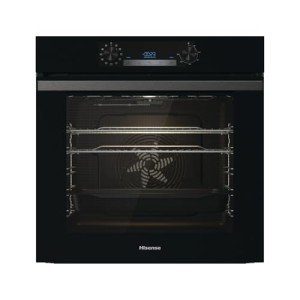Understanding In-Built Ovens: A Comprehensive Guide
In the world of contemporary kitchen design, inbuilt ovens have actually increased to prominence, mixing functionality with aesthetic appeals. Their smooth integration into kitchen cabinetry supplies a structured appearance, making them increasingly preferred by house owners and culinary lovers alike. built-in / integrated hobs and ovens out the numerous features, benefits, setup considerations, and popular types of built-in ovens, together with addressing some frequently asked questions.
What is an In-Built Oven?
A built-in oven, frequently referred to as a built-in oven, is a kitchen appliance created to be set up within cabinets, rather than as a freestanding system. This setup enables a more advanced and organized kitchen design while optimizing readily available space. Built-in ovens come in different sizes, designs, and performances to fit different cooking needs and preferences.
Advantages of In-Built Ovens
The benefits of setting up an inbuilt oven extend beyond mere visual appeals. Here are some crucial advantages:
- Space Efficiency: Built-in ovens are created to fit comfortably within kitchen cabinetry, making them ideal for compact areas. This style leaves counter space complimentary for meal preparations.
- Adjustable Design: Homeowners can select from a range of designs and finishes to match their kitchen decoration, enhancing the general appearance of the space.
- Improved Functionality: Many built-in ovens are geared up with innovative cooking innovation, supplying features such as convection cooking, steam cooking, and self-cleaning functions, which enhance cooking performance and adaptability.
- Ergonomic Height: Installing an oven at eye level reduces the need to flex down, making it simpler to inspect food and manage dishes without straining the back.
- Improved Safety: Built-in ovens can include safety features such as cool-to-the-touch surfaces and child locks, which can be especially important in homes with children.
Types of In-Built Ovens
Inbuilt ovens been available in a number of types to cater to different cooking needs. Below is a comparison of common types:
| Type | Description | Pros | Cons |
|---|---|---|---|
| Single Oven | A standard oven that cooks from one space | Space-efficient, much easier to utilize | Limited cooking capability |
| Double Oven | 2 different oven compartments for diverse cooking | More cooking space, versatility | Greater expense, uses up more space |
| Compact Oven | Smaller ovens perfect for little cooking areas or as a second oven | Space-saving, flexible | Restricted capacity |
| Steam Oven | Uses steam for cooking, preserving wetness | Healthier cooking choices | Usually more costly |
| Wall Oven | Built into the wall, readily available in single or double setups | Saves flooring area | Setup intricacy |
Features to Consider When Choosing an In-Built Oven
When selecting an inbuilt oven, several functions should be considered:
- Size: Measure your kitchen area and cabinetry to guarantee the oven fits effectively. Common widths for built-in ovens range from 24 inches to 30 inches.
- Cooking Methods: Determine the cooking approaches you choose-- conventional, convection, or steam. This decision will considerably influence your cooking design and the oven's capabilities.
- Energy Efficiency: Look for ovens with high energy efficiency scores. These models conserve cash on utility bills and are much better for the environment.
- Control Options: Evaluate the control interfaces. Some models provide clever features enabling remote cooking control and monitoring by means of smartphone apps.
- Security Features: Ensure the oven features important security functions, particularly if kids will be present. Lock-out mechanisms and cool exteriors are important enhancements.
Installation Considerations
Appropriate setup is important for the optimum efficiency of a built-in oven. Here are some setup considerations:
- Ventilation: Ensure proper ventilation to remove smoke and odors. Consult regional structure codes regarding kitchen ventilation requirements.
- Electrical Requirements: Built-in ovens usually need a devoted electrical circuit. Have a qualified electrical contractor examine cost and security.
- Expert Installation: While DIY may be tempting, working with an expert installer guarantees the oven is fitted firmly and safely.
FAQs About In-Built Ovens
What is the distinction in between a built-in oven and a freestanding oven?
Built-in ovens are designed to be set up within cabinets, whereas freestanding ovens can stand alone and normally integrate oven and cooktop in a single device.
Can I install a built-in oven myself?
While DIY setup is possible, it is typically suggested to hire an expert to guarantee security and adherence to regional building codes.
Are in-built ovens worth the financial investment?
Yes, in-built ovens usually provide enhanced aesthetic appeals, advanced functionality, and efficient use of area compared to standard freestanding models.
What maintenance do in-built ovens require?
Routine cleaning, checking seals, and ensuring appropriate ventilation are necessary upkeep tasks. It's suggested to follow the maker's instructions for particular care guidelines.
Just how much does a built-in oven normally cost?
Rates can vary considerably based on functions, brand name, and type, but built-in ovens normally range from ₤ 700 to ₤ 3,000 or more.
In-built ovens provide a mix of sophistication and functionality, making them an excellent option for both brand-new buildings and kitchen remodels. Understanding the types, features, and setup factors to consider can empower property owners to make informed decisions about which in-built oven best fits their needs. As cooking trends develop and kitchen style ends up being more advanced, in-built ovens will continue to play a considerable function in contemporary cooking areas, merging cooking with style and performance.

